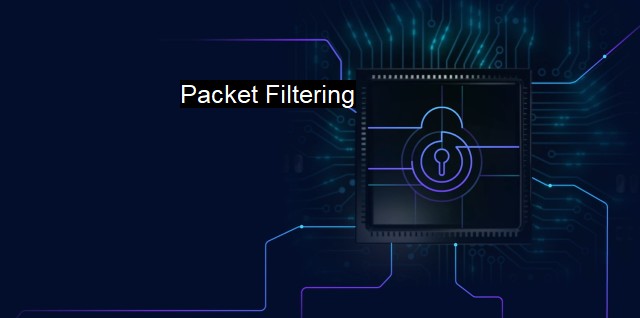What is Packet Filtering?
The Importance of Packet Filtering in Today's Cybersecurity Landscape
Packet filtering is a critical mechanism used in network security today. it pertains to the control of data transfer that is conducted in network security through a systematics screening process of the data packets. These data control measures, concerned with incoming and outgoing data packets, are particularly relevant in cybersecurity and antivirus protocols to create a robust, secure networked environment.A packet, in data transfer parlance, consists of any data unit being exchanged over a network. These packets could carry information of different types such as emails, downloads, connections to sites, profiles to use with services, and limitless varying forms of communication across networks. The information enclosed in packets could potentially lead to unauthorized access to vital data or even give rise to severe network security breaches, by means of viruses, malwares, or cyber attacks. Consequently, the significance of packet filtering in cybersecurity hinges on such risks.
Packet filtering is encapsulated within firewalls that function to safeguard network systems. In this capacity, packet filtering technologies offer the first line of defense in network security. Once an incoming or outgoing data packet is captured, the process involves the investigation, and possibly, the interception of packets that fail to fulfill certain criteria, involving source and destination addresses, ports, and protocols.
The operation of packet filtering relies heavily on specific predetermined security rules set within the firewall. These rules, often devised as per the organization's security policy, fosters an environment which is only accessible to authorized users thereby sustaining integrity, confidentiality and availability. The configuration of these security rules plays a fundamental role in packet filtering.
Two primary methods incorporated within this technique encompass stateless and stateful packet filtering. Stateless packet filtering judiciously reviews each packet independently, without respect to any earlier packets. On the other hand, stateful packet filtering is a tad more complex, as it keeps track of network connections and is involved in filtering decisions. Where stateless packet filtering looks at the individual packets’ headers, stateful observes at the packets within the context of their specific communication sessions.
Despite the fundamental significance of packet filtering in assuring network and internet security, it is not devoid of drawbacks. Certain skilled, malicious hackers might exploit this service by creating intricate data packets. Another pitfall of packet filtering also could be the intensive resource consumption, especially in large-scale, real-time systems. Considering the continuous advancement of potential security threats, an aged packet filtering mechanism may sometimes be inadequate to cope up with the demands of newer, more advanced threats.
Consequently, while packet filtering remains a primary element of a multi-layered security approach, it is crucial to augment it with other methodologies like application firewall, intrusion detection system, and strong encryption techniques. These integrated systems amplify protective measures, especially when coupled with regular security updates to counter the constant morphing of cyber threats.
Comprehending the importance of packet filtering in protecting an organization’s network forms a profound knowledge basis in the understanding and countering of cybersecurity threats via preactive vigilance and dynamic countermeasures. It underlines the constant need for agility within a rapidly evolving cyber landscape to guard the confidentiality, integrity and availability of critical information assets, ensuring the growth and expansion of cyber-healthy environments.

Packet Filtering FAQs
What is packet filtering?
Packet filtering is a cybersecurity mechanism used to control access to a network. It involves examining each packet of data entering or leaving a network and either blocking or allowing it based on predetermined criteria.What are some examples of criteria used in packet filtering?
Packet filtering criteria include source and destination IP addresses, protocol type, port number, and packet content. For example, an antivirus program may be configured to block all incoming traffic from a certain IP address range to protect against known malware threats.What are the benefits of packet filtering?
Packet filtering is a useful cybersecurity tool because it allows organizations to limit access to their network, thereby reducing the risk of unauthorized activity and data breaches. It can also improve network performance by minimizing unnecessary traffic and preventing denial-of-service attacks.Are there any limitations to packet filtering?
Packet filtering has some limitations, mainly related to its reliance on predetermined criteria. For example, it may be difficult to identify and block new or unknown types of malware, and it may be possible for attackers to evade filters by using encrypted traffic or exploiting vulnerabilities in the filtering software. Additionally, packet filtering alone may not provide sufficient protection against more sophisticated cybersecurity threats.| | A | | | B | | | C | | | D | | | E | | | F | | | G | | | H | | | I | | | J | | | K | | | L | | | M | |
| | N | | | O | | | P | | | Q | | | R | | | S | | | T | | | U | | | V | | | W | | | X | | | Y | | | Z | |
| | 1 | | | 2 | | | 3 | | | 4 | | | 7 | | | 8 | | |||||||